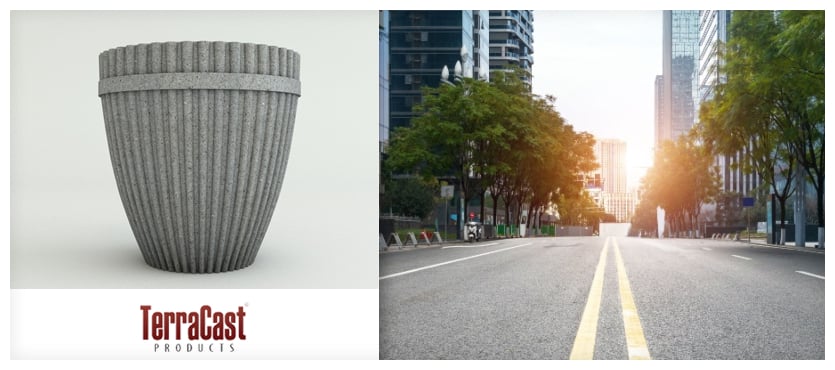Urban landscapes are constantly evolving, shaped by changing trends, technological advancements, and the evolving needs of city dwellers. In recent years, there has been a noticeable shift in urban design, with a growing emphasis on sustainability, durability, and aesthetic appeal. One material that has played a significant role in this evolution is resin. We will be covering the history of urban landscapes, tracing the transition from concrete to resin and the impact it has had on our cities.
The Rise of Concrete
For much of the 20th century, concrete dominated urban landscapes. Its versatility, affordability, and durability made it the material of choice for everything from sidewalks and plazas to buildings and infrastructure projects. Concrete became synonymous with modernity and progress, shaping the skylines of cities around the world.
Historical Fact
The widespread use of concrete in urban construction can be traced back to ancient civilizations such as the Romans, who developed innovative techniques for creating durable concrete structures, including aqueducts, amphitheaters, and bridges.
Challenges with Concrete
- Heavyweight: Concrete structures and amenities were often heavy and cumbersome, making them difficult and costly to transport and install.
- Susceptible to Cracking: Concrete is prone to cracking and deterioration over time, especially in areas with fluctuating temperatures and frequent freeze-thaw cycles.
- Lack of Customization: Concrete often lacked the flexibility to adapt to changing design trends and preferences, resulting in uniform and uninspired urban landscapes.
Enter Resin
In recent decades, resin has emerged as a viable alternative to concrete in urban design projects. Made from synthetic polymers, resin offers a host of advantages that address many of the shortcomings of concrete.
Historical Fact
The development of synthetic polymers, including resins, gained momentum in the mid-20th century with advancements in chemistry and materials science, paving the way for the widespread use of synthetic materials in various industries, including urban design and construction. Notable figures in this field include Dr. Leo Baekeland, who invented Bakelite, one of the earliest forms of synthetic resin, in 1907.
Advantages of Resin
- Lightweight: Resin is significantly lighter than concrete, making it easier to transport, handle, and install in urban environments.
- Durability: Resin is highly durable and resistant to damage from weather, UV radiation, and environmental pollutants, ensuring long-lasting performance in urban settings.
- Customization Options: Resin can be molded into virtually any shape, size, or texture, allowing for greater design flexibility and creativity in urban landscapes.
The Impact of Resin on Urban Landscapes
The adoption of resin in urban design has led to a transformation of cityscapes around the world:
- Enhanced Aesthetics: Resin’s versatility allows for the creation of visually stunning and architecturally distinct elements, such as planters, benches, and sculptures, that add character and charm to urban spaces.
- Improved Functionality: Resin’s lightweight nature and durability make it ideal for a wide range of urban amenities, including seating, lighting, and wayfinding signage, enhancing the functionality and usability of public spaces.
- Sustainable Solutions: Many resin products are made from recycled materials and can be recycled at the end of their lifecycle, reducing the environmental impact of urban development and construction.
Final Thoughts
The evolution of urban landscapes from concrete to resin represents a significant milestone in the history of urban design. With its lightweight, durable, and customizable properties, resin has revolutionized the way we think about and experience our cities. As cities continue to grow and evolve, resin will undoubtedly play an increasingly important role in shaping the urban landscapes of tomorrow, creating sustainable, resilient, and visually captivating environments for generations to come.
At Terracast® Products, we are committed to providing innovative solutions for urban design and landscaping needs. Whether you’re looking to enhance your city streets with durable resin planters, illuminate pedestrian walkways with weather-resistant light pole bases, or create inviting outdoor seating areas with stylish resin furniture, we have you covered. With our extensive range of high-quality resin products and customizable options, we can help bring your vision for vibrant and functional urban spaces to life. Contact us today to learn more about how Terracast® Products can transform your urban environment.

